
"When the One You Love Loves You" is a 1924 composition by American jazz musician and bandleader Paul Whiteman. The song was released as a 78 single by Paul Whiteman and His Orchestra.

"When the One You Love Loves You" is a 1924 composition by American jazz musician and bandleader Paul Whiteman. The song was released as a 78 single by Paul Whiteman and His Orchestra.
Paul Whiteman composed the song with Abel Baer and lyricist Cliff Friend. Whiteman recorded the song on 24 December 1924 in New York City with Franklyn Baur on vocals and released it as Victor 19553-B backed with "I'll See You in My Dreams". The single reached #7 on the Billboard national pop singles charts in April 1925, staying on the charts for 3 weeks. The song is described as "A Sentimental Waltz Ballad" on the 1925 sheet music.
Singer and composer Morton Downey, Sr., the father of the talk show host, recorded the song in 1925 and released it as Brunswick 2887. Eva Shirley sang the song in Ed Wynn's Grab Bag, a Broadway musical which opened in 1924 at the Globe. Leo Feist published the sheet music for the Shirley version in 1924 featuring Eva Shirley on the cover.

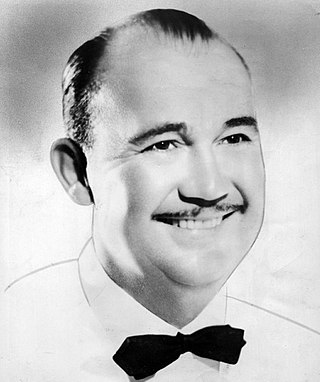
Paul Samuel Whiteman was an American bandleader, composer, orchestral director, and violinist.

Rhapsody in Blue is a 1924 musical composition written by George Gershwin for solo piano and jazz band, which combines elements of classical music with jazz-influenced effects. Commissioned by bandleader Paul Whiteman, the work premiered in a concert titled "An Experiment in Modern Music" on February 12, 1924, in Aeolian Hall, New York City. Whiteman's band performed the rhapsody with Gershwin playing the piano. Whiteman's arranger Ferde Grofé orchestrated the rhapsody several times including the 1924 original scoring, the 1926 pit orchestra scoring, and the 1942 symphonic scoring.
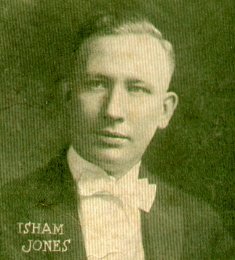
Isham Edgar Jones was an American bandleader, saxophonist, bassist and songwriter.
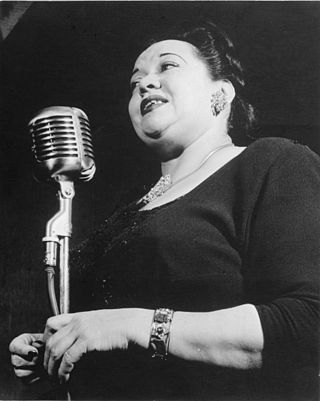
Mildred Bailey was a Native American jazz singer during the 1930s, known as "The Queen of Swing", "The Rockin' Chair Lady" and "Mrs. Swing". She recorded the songs "For Sentimental Reasons", "It's So Peaceful in the Country", "Doin' The Uptown Lowdown", "Trust in Me", "Where Are You?", "I Let a Song Go Out of My Heart", "Small Fry", "Please Be Kind", "Darn That Dream", "Rockin' Chair", "Blame It on My Last Affair", and "Says My Heart". She had three records that reached number one on the popular charts.
"All Alone" is a popular waltz ballad composed by Irving Berlin in 1924. It was interpolated into the Broadway show The Music Box Revue of 1924 where it was sung by Grace Moore and Oscar Shaw. Moore sat at one end of the stage under a tightly focused spotlight, singing it into a telephone, while Oscar Shaw sat at the other, doing the same.

"Smoke Gets in Your Eyes" is a show tune written by American composer Jerome Kern and lyricist Otto Harbach for the 1933 musical Roberta. The song was sung in the Broadway show by Tamara Drasin. Its first recorded performance was by Gertrude Niesen, who recorded the song with orchestral direction from Ray Sinatra, Frank Sinatra's second cousin, on October 13, 1933. Niesen's recording of the song was released by Victor, with the B-side, "Jealousy", featuring Isham Jones and his Orchestra.

"I'll See You in My Dreams" is a popular song, composed by Isham Jones, with lyrics by Gus Kahn, and published in 1924. It was recorded on December 4 that year, by Isham Jones conducting Ray Miller's Orchestra. Released on Brunswick Records, it charted for 16 weeks during 1925, spending seven weeks at number 1 in the United States. Other popular versions in 1925 were by Marion Harris; Paul Whiteman; Ford & Glenn; and Lewis James; with three of these four reaching the Top 10.
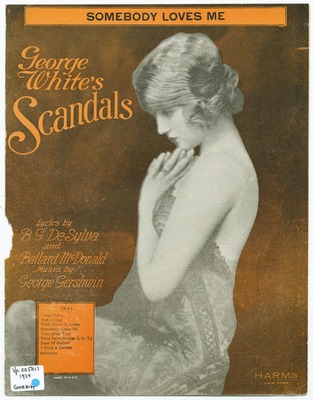
"Somebody Loves Me" is a popular song, with music written by George Gershwin, and lyrics by Ballard MacDonald and Buddy DeSylva. The song was published in 1924 and featured in George White's Scandals of 1924.

"The World Is Waiting for the Sunrise" is a post-World War I popular song, with lyrics by American actor Eugene Lockhart, and music composed by Canadian-born concert pianist Ernest Seitz in 1918. He later claimed he conceived the refrain when he was 12 years-old. Embarrassed about writing popular music, Seitz used the pseudonym "Raymond Roberts" when the song was published on January 24, 1919, by Chappell & Co. Ltd., London, UK.
"I'm in the Mood for Love" is a popular song published in 1935. The music was written by Jimmy McHugh, with the lyrics by Dorothy Fields. The song was introduced by Frances Langford in the movie Every Night at Eight released that year.
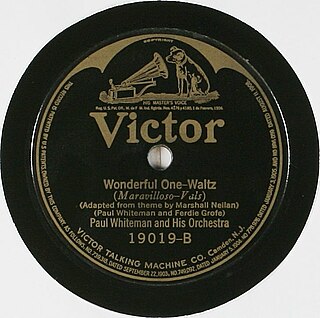
"Wonderful One" is a popular song recorded by the Paul Whiteman Orchestra on January 25, 1923 in New York and was released as Victor 19019-B. The record reached no. 3 on the Billboard chart. The song was also recorded as "My Wonderful One".

"Nobody's Sweetheart", also known as "Nobody's Sweetheart Now" and "You're Nobody's Sweetheart Now", is a popular song, written in 1924, with music by Billy Meyers and Elmer Schoebel, and lyrics by Gus Kahn and Ernie Erdman. The song is a jazz and pop standard.

"Alabamy Bound" is a Tin Pan Alley tune written in 1924, with music by Ray Henderson and words by Buddy DeSylva and Bud Green. It was popularized by Al Jolson and included in the musical Kid Boots, where it was sung by Eddie Cantor. Successful recordings of the song were released in 1925 by Paul Whiteman, Isham Jones and Fletcher Henderson (instrumentals), as well as Blossom Seeley, whose vocal version reached number 2 on the charts. The song has sold over a million copies of sheet music and has been included in several films over the years.

"Hot Lips" or "He's Got Hot Lips When He Plays Jazz" is a popular song written by jazz trumpeter Henry Busse, Henry Lange, and Lou Davis. The song was a number one hit for Paul Whiteman and His Orchestra. Henry Busse was a founding member of the Paul Whiteman Orchestra, joining in 1920.

The period from the end of the First World War until the start of the Depression in 1929 is known as the "Jazz Age". Jazz had become popular music in America, although older generations considered the music immoral and threatening to cultural values. Dances such as the Charleston and the Black Bottom were very popular during the period, and jazz bands typically consisted of seven to twelve musicians. Important orchestras in New York were led by Fletcher Henderson, Paul Whiteman and Duke Ellington. Many New Orleans jazzmen had moved to Chicago during the late 1910s in search of employment; among others, the New Orleans Rhythm Kings, King Oliver's Creole Jazz Band and Jelly Roll Morton recorded in the city. However, Chicago's importance as a center of jazz music started to diminish toward the end of the 1920s in favor of New York.

"Flamin' Mamie" is a 1925 jazz classic composed by Paul Whiteman and Fred Rose.
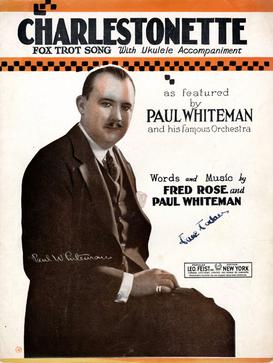
"Charlestonette" is a 1925 jazz composition by jazz musician and bandleader Paul Whiteman and Fred Rose. The song was released as a 78 single by Paul Whiteman and His Orchestra.

"Wang Wang Blues" is a 1920 jazz composition written by Henry Busse, Gussie Mueller, and Theron E. "Buster" Johnson, with lyrics by Leo Wood. The song was released as a 78 single by Paul Whiteman and his Orchestra featuring Henry Busse on trumpet. The song is a pop and jazz standard.
Larry Wagner was an American arranger, composer, and bandleader. He worked for the band of Paul Whiteman and was long associated with Glen Gray and the Casa Loma Orchestra. His compositions "Whistler's Mother-in-Law", "No Name Jive" and "Turn Back the Hands of Time" became nationally popular.